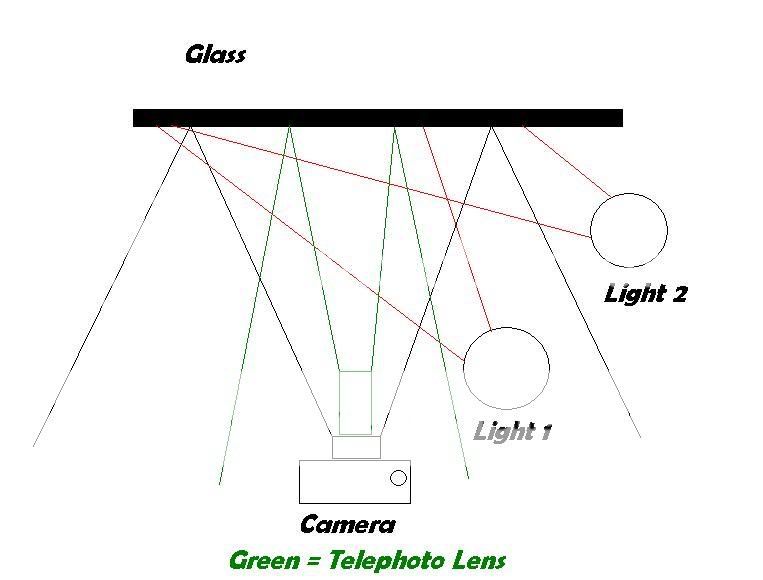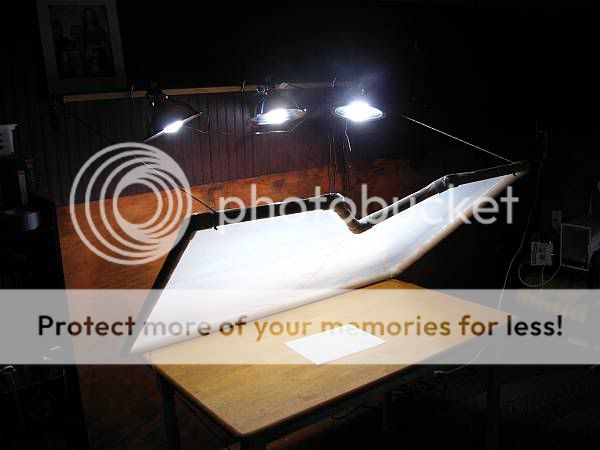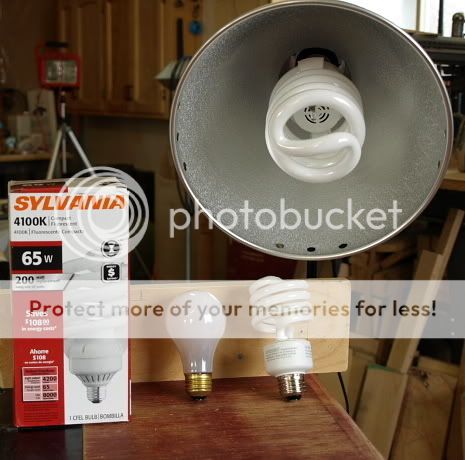As some suggested above I purchased some cheap Lowe's floodlights and have been using those for isolated photography. In order to get more flexibility I simply covered the lights in several layers of a semi-transparent white shower curtain to soften the light. I put one light on each side of the subject pointing at the white paper and that seems to do the trick.
The only problem with my setup is that it doesn't work so well for objects that are highly reflective (you can see bright spots where the light reflects off them). I believe that the light tent is supposed to help that, but is there anyway to accomplish the same thing using my setup (the covered lights with no light tent)? Thanks.
Reflection is based on several things including light placement, the shape of the object, and focal length.
Below is a painstakingly illustrated masterpiece that shows how reflections get from the light to your lens. BTW, all you need is a flash light and a piece of glass to actually see this concept, a camera isn't needed at all.
The black "lens" represents say a 50mm prime lens. The black lines protruding from it show the viewing area. Light one is close to the camera and aimed at the glass. The light is bouncing of the glass (or any highly reflective surface really) and bouncing into the FOV of the 50mm lens.
The green lens is say 200mm lens. It's FOV is considerably smaller, but so are the angles at which the light enters the glass. Light 1 is still shooting light off the glass and into the lens because of the position.
Now if you take the light and move it off the the side, it's moving where the light is hitting the reflective surface and bouncing back towards the camera. Since the 50mm lens has such a wide angle at which the light enters the lens, you'd have to move the lens farther off to the side. The 200mm lens has a smaller angle of which the light enters the glass. You don't have to move the light as far off to the side as if you were using a wider lens, you just have to move it outside of the angle that light enters the lens.
Get a mirror and a flash light. Shine the flash light directly at the mirror. Then rotate the flash light around and you'll see the light disappear but the mirror will remain light as you're moving the flash light out of the angle of which light enters the lens (your eyes).
When you start messing with curved objects or with items that have multiple plates, etc..., that can reflect light, you have to adjust to get the best shot possible.
A polarizer can help with some reflections as well. There's a lot to how it works, but check out "Light Science and Magic" for a great explanation of how light works.

















